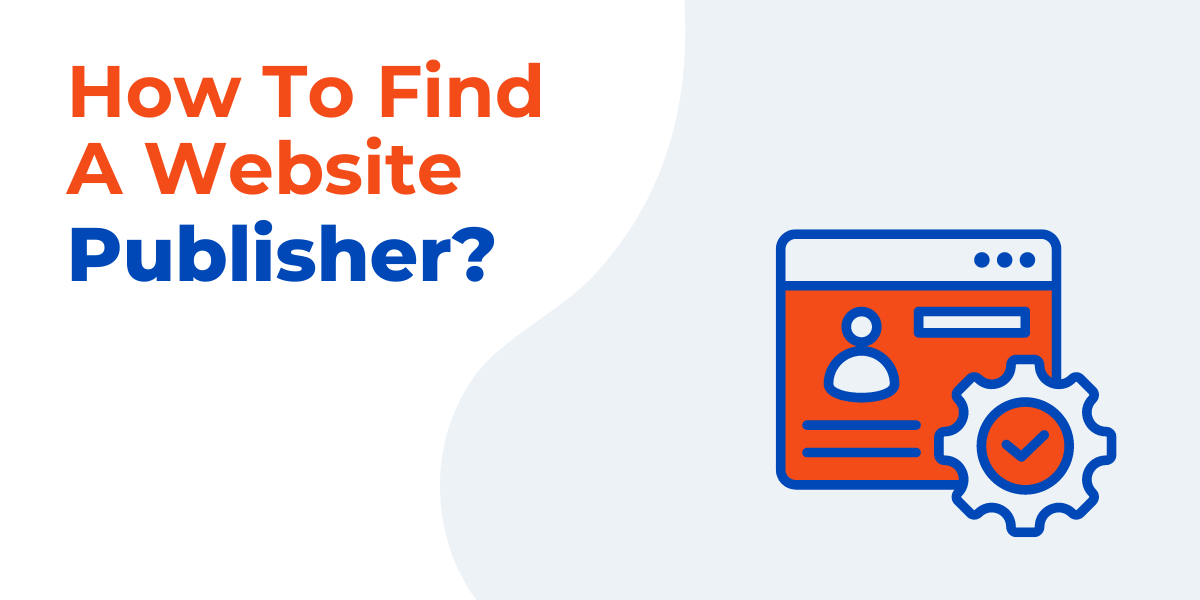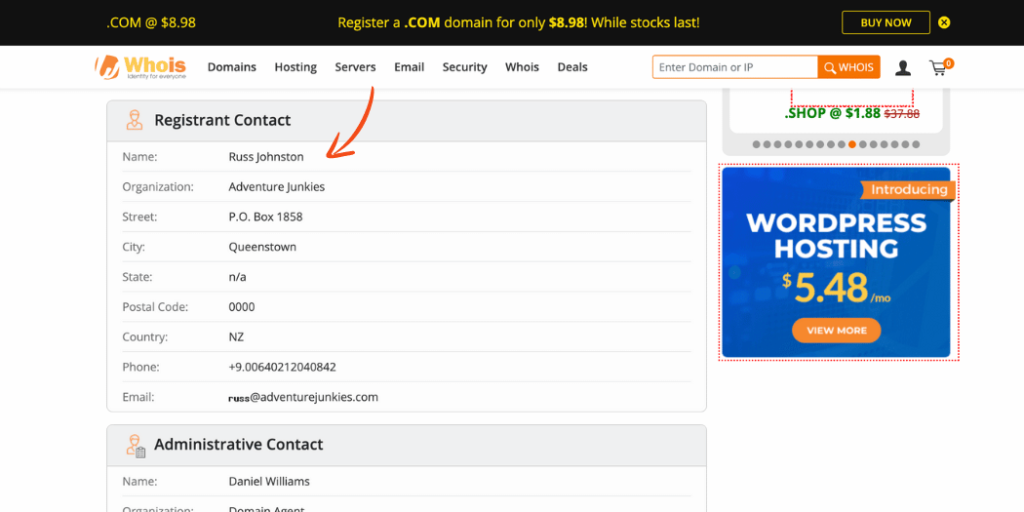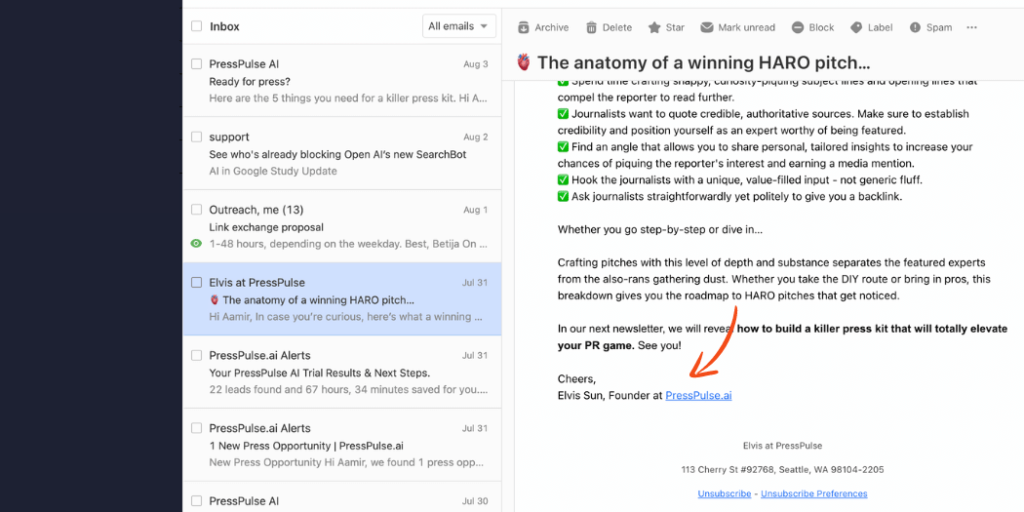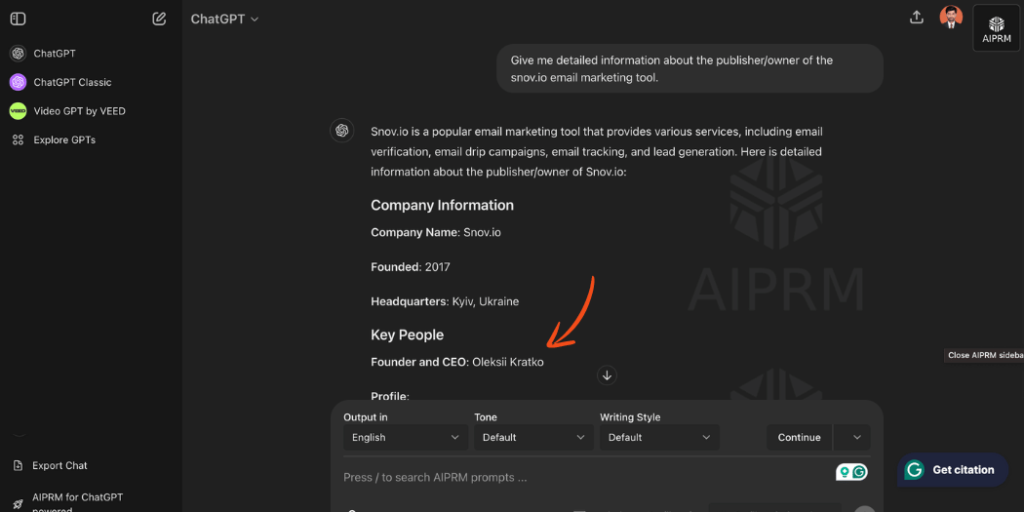Websites are like the digital forefront and a source of information for sharing with people around the globe. Whenever you visit a website, a curiosity about the owner arises.
For content marketers, it is important to know about the author behind a published web page. They need to know about the publisher for marketing partnerships and collaborations. In this guide, I will reveal the 6 best methods to find the publisher of a website with examples.
7 Methods To Find The Publisher Of A Website

1. Check the About Us Page
About Us page is the go-to destination to learn about the team behind it. It usually contains all the necessary information of website owners, publishers, and creators.
Example: Suppose visit a website named “techjury.net.” By clicking the ‘About Us’ menu on the header, you find several pages with drop-downs to navigate you to the desired destination.

2. Search for Author Names
Search the author names in search engines and social media pages to trace back the publisher. Here is an example:
Example: You come across a blog post on “tomba.io” authored by Abedrahim Ben Rebia. A quick search on LinkedIn reveals that Abedrahim is the founder and publisher of the website.

3. Domain Registration Information
Domain registration information also leads to the owner of a website. Use WHOIS and other domain lookup tools to get this information. Here is how:
Example: You want to know about the publisher of “adventurejunkies.com.” WHOIS lookup tells that the website is registered with Russ Johnston. Now it is easy to reach out with given contact details.

4. Social Media Profiles
Websites having good reputations maintain an active social media presence. Visiting their pages can also help you in getting some clues about the publisher.
Example: You were going through “talentify.io” and wanted to know about its CEO. Visit the LinkedIn page and it tells about its CEO in the employees section.

5. Contact Forms and Email Signatures
Contact form and email signature is another good way to get information about the website publisher. It is only possible if they are using email signatures in the correspondence.
Example: You receive an email newsletter from “presspulse.ai.” In the email signature, you will find the name and contact information of Elvis Sun, who is the founder of this SaaS website.

6. Online Directories and Business Listings
Business websites share their information in local listings and online directories. Where it is easy to determine their owner/publisher details.
Example: You were struggling to find the publisher information of “calendly.com” Searching their business information on Product Hunt shows the whole team behind it.

7. Use Simple ChatGPT Prompts
ChatGPT is the quickest and easiest method to find the publisher of a website. Just give it a simple prompt about your required information and it will give you the name and other details of its publisher.
Example: I want to know about the publisher of the snove.io SaaS tool. Here is the prompt you can use “Give me detailed information about the publisher/owner of the snov.io email marketing tool.”

Conclusion
The publisher’s identity helps in building the credibility of the source and the opportunity to establish business collaborations. The above methods are simple and work for every type of website published on the web.
Some websites deliberately hide the publisher’s details to reduce spam requests. Once the identity is successfully established it is easy to get the contact information with free email marketing tools.